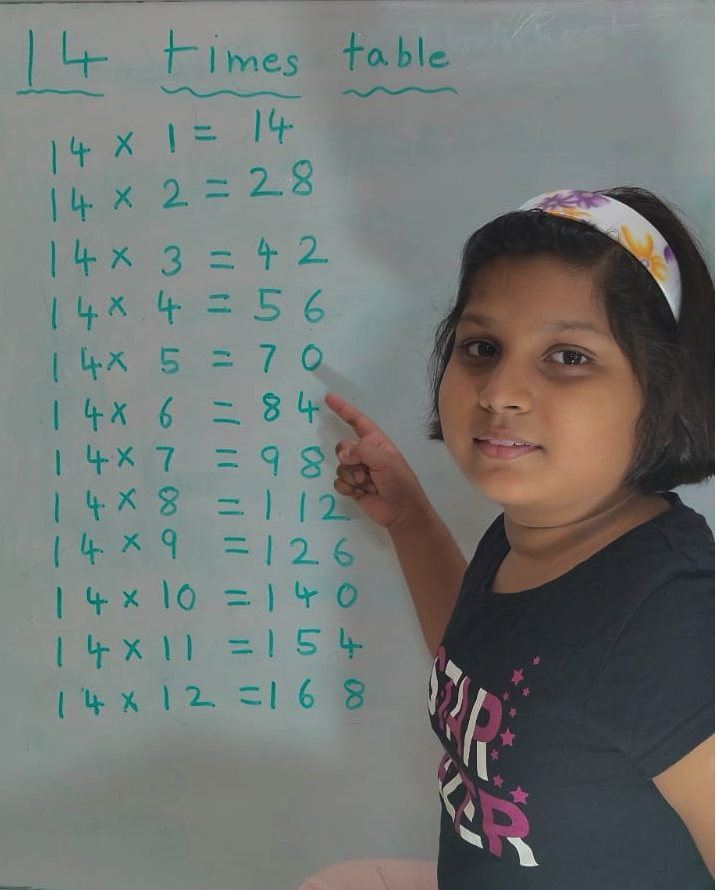Problems on Mean of Ungrouped Data
Here we will learn how to solve the different types of problems on mean of ungrouped data.
1. (i) Find the mean of 6, 10, 0, 7, 9.
(ii) Find the mean of the first four odd natural numbers.
Solution:
(i) We know that the mean of five variates x1, x2, x3, x4, x5 is given by
A = x1+x2+x3+x4+x55
= 6+10+0+7+95
= 325
= 6.4
(ii) The first four odd natural numbers are 1, 3, 5, 7.
Therefore, mean A = x1+x2+x3+x44
= 1+3+5+74
= 164
= 4.
2. Find the mean of the following data:
10, 15, 12, 16, 15, 10, 14, 15, 12, 10.
Solution:
There are ten variates. So,
mean = A = 10+15+12+16+15+10+14+15+12+1010
= 12910
= 12.9
Alternatively,
As variates are repeated in the collection, we take note of their frequencies.
Variate
(x1)
10
12
14
15
16
Total
Frequency
(f1)
3
2
1
3
1
10
Therefore, mean = A = x1f1+x2f2+x3f3+x4f4+x5f5f1+f2+f3+f4+f5
= 10×3+12×2+14×1+15×3+16×13+2+1+3+1
= 30+24+14+45+1610
= 12910
= 12.9
3. The mean age of five boys is 16 years. If the ages of four of them be 15 years, 18 years, 14 years and 19 years then find the age of the fifth boy.
Solution:
Let the age of the fifth boy be x years.
Then the mean age of the five boys = 15+18+14+19+x5 years.
Therefore, from the question, 16 = 15+18+14+19+x5
⟹ 80 = 66 + x
Therefore, x = 80 – 66
x = 14.
Therefore, the age of the fifth boy is 14 years.
4. The mean of five data is 10. If a new variate is included, the mean of the six data becomes 11. Find the sixth data.
Solution:
Let the first five data be x1, x2, x3, x4, x5 and the sixth data be x6.
The mean of the first five data = x1+x2+x3+x4+x55
From the question, 10 = x1+x2+x3+x4+x56
Therefore, x1 + x2 + x3 + x4 + x5 = 50 ........................ (i)
Again, from the question, 11 = x1+x2+x3+x4+x5+x66
Therefore, x1 + x2 + x3 + x4 + x5 + x6 = 66
Therefore, 50 + x6 = 66, [Using the equation (i)]
Therefore, x6 = 66 - 50
x6 = 16
Therefore, sixth data is 16.
From Problems on Mean of Ungrouped Data to HOME PAGE
Didn't find what you were looking for? Or want to know more information about Math Only Math. Use this Google Search to find what you need.
Recent Articles
-
Vertical Subtraction | Examples | Word Problems| Video |Column Method
Mar 22, 25 05:20 PM
Vertical subtraction of 1-digit number are done by arranging the numbers column wise i.e., one number under the other number. How to subtract 1-digit number vertically? -
Worksheet on 11 Times Table | Printable Multiplication Table | Video
Mar 22, 25 05:08 PM
Worksheet on 11 times table can be printed out. Homeschoolers can also use these multiplication table sheets to practice at home. -
Worksheet on 10 Times Table | Printable Multiplication Table | Video
Mar 21, 25 03:46 PM
Worksheet on 10 times table can be printed out. Homeschoolers can also use these multiplication table sheets to practice at home. -
5th Grade Prime and Composite Numbers | Definitions | Examples | Math
Mar 21, 25 12:18 AM
5th grade prime and composite numbers -
14 Times Table | Read and Write Multiplication Table of 14| Video
Mar 20, 25 04:03 PM
In 14 times table we will learn how to read and write multiplication table of 14. We read fourteen times table as:One time fourteen is 14 Two times fourteen are 28 Three times fourteen are 42





New! Comments
Have your say about what you just read! Leave me a comment in the box below. Ask a Question or Answer a Question.